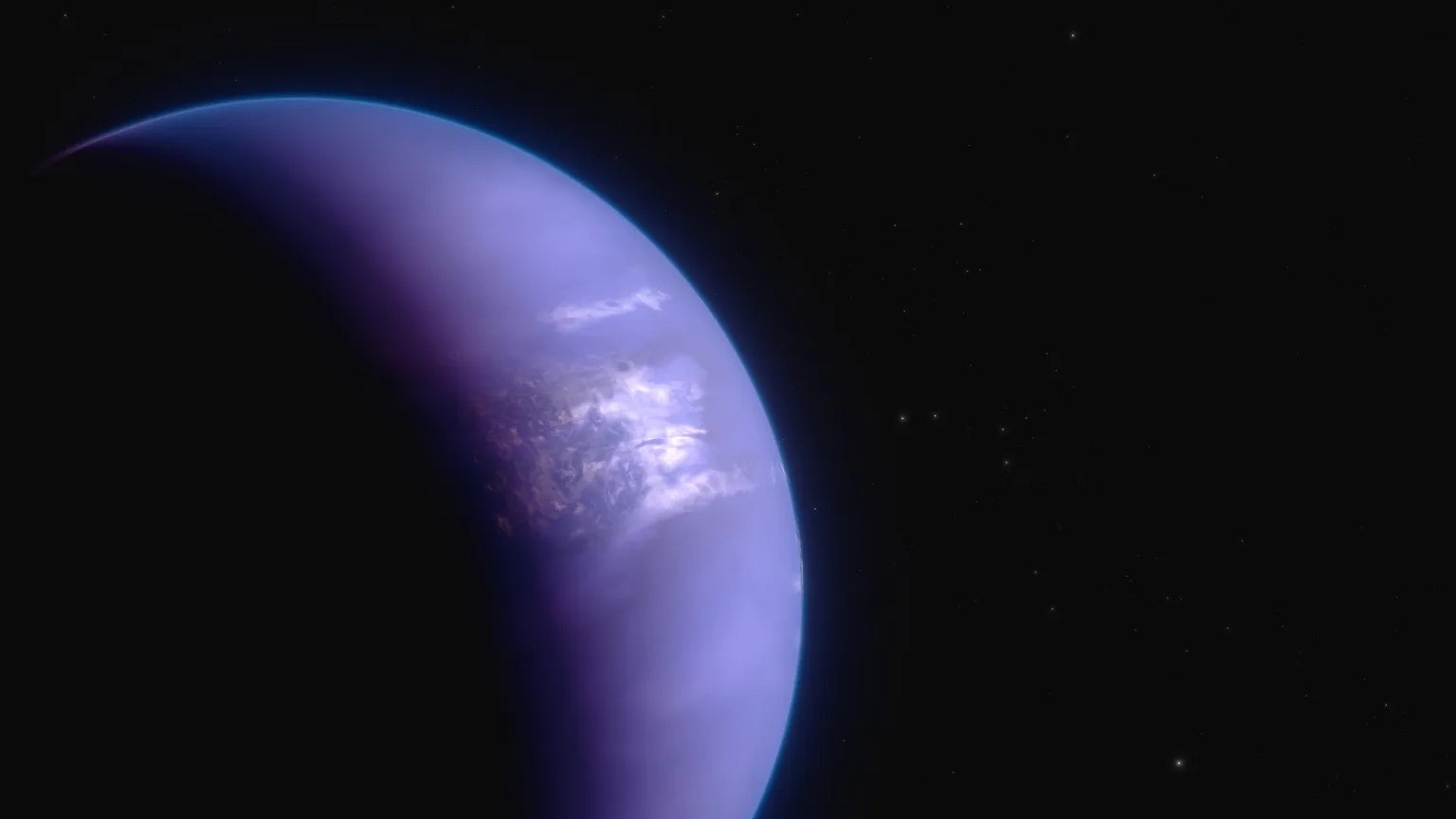James Webb telescope spots wind blowing faster than a bullet on '2-faced planet' with eternal night
New James Webb Space Telescope observations of the exoplanet WASP-43b reveal that the hot gas giant is tidally locked, meaning one side permanently faces its sun while the other always stares out into space.

Scientists using the James Webb Space Telescope (JWST) have mapped the weather on a planet 280 light-years from Earth — a hot gas giant with one side permanently facing its sun and the other cloaked in eternal night.
The Janus-faced planet, named WASP-43b, is composed primarily of hydrogen and helium and is significantly hotter than any gas giant in our solar system, due to its closeness to its host star, which it orbits once every 19 Earth hours. This extreme proximity means WASP-43b is also tidally locked to its star.
Now, researchers have discovered that this tidal lock permanently heats one side of the planet to temperatures around 2,300 degrees Fahrenheit (1,260 degrees Celsius) — hot enough to melt iron. This scorching heat vaporizes rock and carries it into clouds.
The temperature difference between the day and night side, which is comparatively cooler at 1,110 F (600 C), drives fierce winds that can reach speeds of up to 5,600 mph (9,000 km/h), the scientists found. The researchers published their extraterrestrial weather report April 30 in the journal Nature Astronomy.
WASP-43b was discovered in 2011 and was initially studied by the Hubble and Spitzer space telescopes, but the superior resolution of the JWST has now captured the finer details of its atmosphere.
"With Hubble, we could clearly see that there is water vapor on the dayside. Both Hubble and Spitzer suggested there might be clouds on the nightside," lead author Taylor Bell, a researcher at the Bay Area Environmental Research Institute in San Jose, California, said in a statement. "But we needed more precise measurements from Webb to really begin mapping the temperature, cloud cover, winds, and more detailed atmospheric composition all the way around the planet."
Sign up for the Live Science daily newsletter now
Get the world’s most fascinating discoveries delivered straight to your inbox.
To gauge the temperature of the planet, the researchers used the JWST's Mid-Infrared Instrument (MIRI) to measure light from the system every 10 seconds for more than 24 hours.
"By observing over an entire orbit, we were able to calculate the temperature of different sides of the planet as they rotate into view," Bell said. "From that, we could construct a rough map of temperature across the planet."
JWST's infrared measurements also revealed the planet's chemical composition, which includes water vapor but lacks methane. Methane is usually produced on planets of this type via reactions between hydrogen and carbon monoxide, but the planet's fierce winds may be carrying this methane to the planet's dayside where it is destroyed by its host star's fierce radiation.
Following up on the current findings, another team is using the JWST's Near-Infrared Spectrometer (NIRSpec) instrument to improve the temperature map and measure the carbon monoxide in the two-faced planet's atmosphere.

Ben Turner is a U.K. based staff writer at Live Science. He covers physics and astronomy, among other topics like tech and climate change. He graduated from University College London with a degree in particle physics before training as a journalist. When he's not writing, Ben enjoys reading literature, playing the guitar and embarrassing himself with chess.









